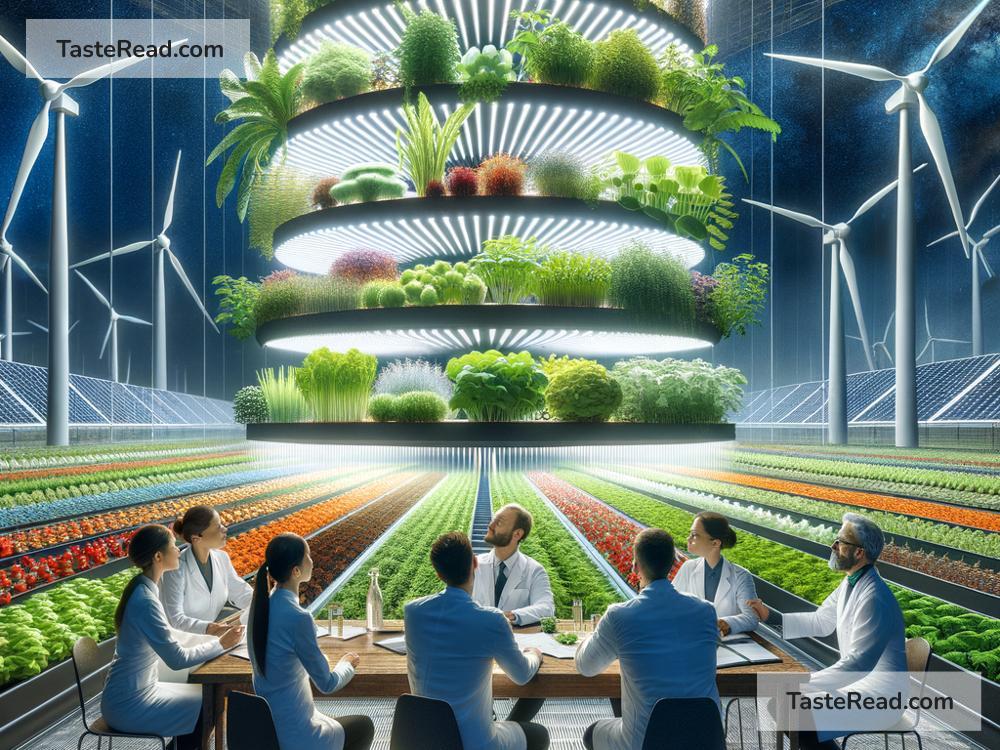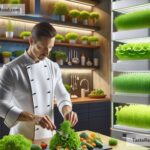The Future of Food: Building Sustainable Food Systems
Food is one of the most important parts of our lives. Without it, we cannot survive. But in today’s world, the way we produce, grow, and use food is creating big challenges for our planet and for people. Climate change, population growth, and the way we waste food are all causing problems. So, how can we improve things and make food systems sustainable for the future? Let’s explore.
What Is a Sustainable Food System?
A sustainable food system is one that provides healthy, nutritious food for everyone today without harming the planet or future generations. It means producing food in ways that protect the environment, treat farmers and workers fairly, and reduce waste.
Right now, many of our food systems aren’t sustainable. For example, large-scale farming practices often damage soil, pollute water, and release greenhouse gases that contribute to global warming. In some places, people don’t have enough food, while in other areas, food is wasted in huge amounts. This way of producing and consuming food cannot continue forever—something has to change.
Challenges for the Future of Food
Why is the future of food so important? Because the world is changing in ways that make it harder to feed everybody. Here are some of the biggest challenges:
-
Population Growth: The global population is expected to reach about 10 billion by 2050. More people mean more demand for food, water, and land.
-
Climate Change: Rising temperatures, unpredictable weather, and extreme events like droughts and floods are making it harder to grow crops. Farmers are struggling to adapt to these changes.
-
Resource Overuse: Farming uses a lot of resources like water, land, and energy. In many places, these resources are running out.
-
Food Waste: Around one-third of all food produced globally is wasted. This happens during harvesting, transportation, and even when food is thrown away uneaten. Food waste also wastes the resources used to produce that food.
-
Dietary Shifts: As people around the world earn more money, they often consume more meat and processed foods. While these can be enjoyable, they use up more resources and contribute to environmental harm.
Solutions: How Can We Create a Sustainable Food System?
While the challenges are serious, there is hope. Innovators, farmers, governments, and organizations are working together to find solutions that could transform the future of food. Here are some exciting ideas and practices:
1. Growing Food More Efficiently
Farmers are finding new ways to grow food using fewer resources. For example, vertical farming involves growing crops in tall buildings instead of on traditional farmland. This method uses less water and space while producing fresh food close to cities.
Precision farming is another approach. With the help of technology, farmers can monitor their soil, water, and plants in real-time to minimize waste and maximize productivity.
2. Alternative Proteins
Meat production uses a lot of land, water, and energy. It also produces greenhouse gases. To reduce this impact, more companies are creating alternative proteins like plant-based meat, lab-grown meat, and insect-based foods.
Plant-based proteins, like burgers made from soy or peas, are already popular in many countries. Lab-grown meat, made by growing animal cells in a lab, could provide real meat without needing to raise or slaughter animals. Insects, such as crickets, are highly nutritious and require far fewer resources to grow.
3. Reducing Food Waste
Cutting food waste can make a huge difference. One solution is better storage systems, especially in countries where food spoils quickly due to a lack of refrigeration. Apps and platforms that connect food businesses to charities or consumers who need excess food are also helping reduce waste.
At home, people can play their part by planning meals carefully, using leftovers, and composting food scraps.
4. Supporting Local and Regenerative Farming
Sourcing food locally reduces the need for long-distance transportation, which lowers emissions. Regenerative farming practices focus on improving soil health, reducing chemical use, and encouraging biodiversity. This approach not only helps the environment but also supports small farmers.
5. Education and Policy Changes
Governments and communities need to work together to build policies that promote sustainable food systems. For example, governments can offer financial support to farmers who use eco-friendly practices. They can also set rules to reduce food waste and encourage healthier diets.
Education is also key. When people understand how their food choices affect the planet, they can make better decisions—like eating more plant-based meals, buying local food, and wasting less.
The Role of Technology in the Future of Food
Technology will play a big role in making food systems sustainable. From drones that monitor crops to apps that connect consumers with local farms, new tools can help farmers produce more food with less environmental harm.
Artificial intelligence (AI) can analyze weather patterns to help farmers decide when to plant or harvest crops. Blockchain technology is being used to make food supply chains more transparent, ensuring food is grown and delivered in ethical, sustainable ways.
Conclusion: We All Have a Role to Play
The future of food doesn’t just depend on farmers, scientists, or governments—it depends on all of us. Each of us can make choices to support a sustainable food system. Whether it’s eating less meat, reducing food waste, or supporting local farmers, every action counts.
Food is a powerful way to connect with people and with the planet. By working together and making thoughtful choices, we can build a world where everyone has enough to eat, and the environment remains healthy for generations to come.


